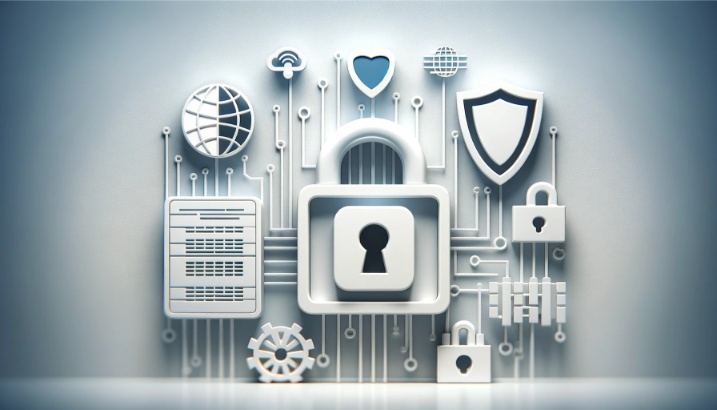Are you worried about your sensitive data falling into the wrong hands? Well, just like a fortress protecting its treasures, Security Measures Taken by Data Entry Services in the USA are in place to safeguard your valuable information. From secure data transmission protocols to encryption techniques, these services leave no stone unturned when protecting your data.
They ensure that only authorized individuals have access through access control and user authentication. Like a moat surrounding a castle, a firewall and antivirus protection keep out any malicious threats. And in case of any unforeseen events, regular data backups act as a safety net. So rest assured, your sensitive data is in good hands with data entry services in the USA.
Secure Data Transmission Protocols
Data entry services in the USA implement secure data transmission protocols to protect sensitive data. These protocols are designed to safeguard the information during its transfer from one system to another. One of the key elements of secure data transmission is the use of encryption techniques. Encryption transforms the data into an unreadable format, making it inaccessible to unauthorized individuals.
By encrypting the data, data entry services can ensure that the information remains secure even if there is a breach during transmission. In addition to encryption, secure data transmission protocols involve using secure networks and protocols such as SSL/TLS. These protocols establish a secure connection between the sender and receiver, encrypting the data in transit.
This prevents any unauthorized access or tampering of the information. Furthermore, data entry services employ firewalls and intrusion detection systems to monitor and filter network traffic, preventing potential threats from accessing sensitive data.
Encryption Techniques
Data entry services in the USA employ various encryption techniques to ensure the utmost security of sensitive data. These techniques are designed to protect data from unauthorized access, ensuring data privacy and maintaining the integrity of the information. Here are four encryption techniques commonly used by data entry services:
-
Symmetric Encryption: This technique uses a single key to encrypt and decrypt data. It is fast and efficient but requires both the sender and the receiver to have the same key, making key management crucial.
-
Asymmetric Encryption: Also known as public-key encryption, this technique uses a pair of keys – a public key for encryption and a private key for decryption. It eliminates the need for a shared key but is slower than symmetric encryption.
-
Hashing: Hashing is a one-way encryption technique that converts data into a fixed-length string of characters. It is commonly used to verify data integrity and protect passwords.
-
Transport Layer Security (TLS): TLS is a protocol that ensures secure communication over the Internet. It encrypts data during transmission, preventing unauthorized access.
Access Control and User Authentication
Access control and user authentication are critical components of data entry services in the USA to protect sensitive data. Two-factor authentication is an effective method used to verify the identity of users accessing the system, requiring them to provide two different forms of identification.
This additional layer of security helps prevent unauthorized access and ensures that only authorized individuals can view and manipulate sensitive data. Implementing robust access control measures is of utmost importance to safeguard sensitive information and maintain the integrity of data entry services.
Two-Factor Authentication Effectiveness
How effectively does two-factor authentication control access and authenticate users for data entry services in the USA?
Two-factor authentication (2FA) is an essential security measure for data entry services in the USA. It provides an extra layer of protection by requiring users to provide two different forms of identification before gaining access to sensitive data. Here is why 2FA is effective:
-
Biometric authentication implementation: By incorporating biometric factors such as fingerprints or facial recognition, 2FA ensures that only authorized individuals can access the system.
-
Role-based access controls: 2FA is often integrated with role-based access controls, meaning users only have access to the specific data and functions necessary for their job. This helps prevent unauthorized access to sensitive information.
-
Increased security: By requiring two different types of authentication, 2FA significantly reduces the risk of unauthorized access, even if one factor is compromised.
-
User-friendly experience: Despite providing an additional layer of security, 2FA can be implemented user-friendly, ensuring a smooth and efficient authentication process.
Importance of Access Control
Ensure that you control and authenticate user access to protect sensitive data. Access control is of paramount importance when it comes to maintaining the security of data entry services. By implementing access control measures, you can limit unauthorized access to sensitive information, ensuring that only authorized individuals have the necessary permissions to view or modify data.
This helps safeguard the data’s confidentiality, integrity, and availability. Additionally, access control plays a crucial role in maintaining the accuracy of data entry. By allowing only authorized users to make changes or additions to the data, you can minimize the risk of errors or tampering.
The importance of physical security cannot be overlooked either, as it complements access control measures by preventing unauthorized physical access to sensitive areas where data is stored or processed. Overall, effective access control measures are essential for ensuring the security and accuracy of data entry services.
Firewall and Antivirus Protection
To protect sensitive data, data entry services in the USA implement robust firewalls and antivirus protection. These security measures are crucial in preventing unauthorized access and ensuring the integrity and confidentiality of the data. Here are the critical aspects of firewall and antivirus protection that data entry services focus on:
-
Firewall Maintenance: Regular maintenance and updates of the firewall are essential to ensure its effectiveness. This includes reviewing and adjusting firewall rules, monitoring network traffic, and applying security patches. Data entry services can detect and block unauthorized access attempts by maintaining the firewall.
-
Antivirus Software Updates: Keeping antivirus software up to date is crucial for protecting against the latest threats. Data entry services regularly update their antivirus software to ensure it can detect and eliminate new viruses, malware, and other malicious software. By staying current with software updates, data entry services can mitigate the risk of data breaches and other security incidents.
-
Real-Time Threat Monitoring: Data entry services employ real-time threat monitoring tools that continuously analyze network traffic and identify any suspicious activity. These tools can detect and alert administrators to potential threats, enabling them to take immediate action to prevent security breaches.
-
Intrusion Detection and Prevention Systems: Intrusion detection and prevention systems (IDPS) detect and block unauthorized access attempts. These systems monitor network traffic and analyze patterns and behaviors to identify potential threats. By deploying IDPS, data entry services can proactively protect sensitive data from unauthorized access.
Regular Data Backups
What additional security measure is crucial for data entry services in the USA to protect sensitive data? Regular data backups are a critical security measure that data entry services must implement to safeguard sensitive data. Disaster recovery plans and data redundancy are essential to a comprehensive backup strategy.
Disaster recovery plans outline the steps and procedures to be followed for a data loss or system failure. These plans ensure that data entry services can quickly recover and restore their systems and data to minimize downtime and prevent loss of sensitive information. By regularly backing up data, organizations can easily retrieve and restore data in case of accidental deletions, hardware failures, or cyberattacks.
Data redundancy is an essential aspect of regular data backups. It involves creating multiple copies of data and storing them in different physical or virtual locations. This redundancy ensures that alternative copies are available for recovery even if one copy of the data is compromised or inaccessible. It provides an added layer of protection against data loss and increases the chances of successful data restoration.
To ensure the effectiveness of regular data backups, data entry services should follow best practices such as performing backups at regular intervals, verifying the integrity of the backup files, and storing backups in secure and controlled environments. By implementing robust backup strategies, data entry services can safeguard sensitive data and maintain business continuity in the face of potential data loss incidents.
Confidentiality Agreements
Regular data backups are crucial for protecting sensitive data, and another essential security measure taken by data entry services in the USA is the implementation of confidentiality agreements. These agreements serve as legal contracts between the data entry service provider and the client, ensuring the protection and confidentiality of sensitive information.
Here are four critical aspects of confidentiality agreements that help prevent data breaches and comply with data privacy regulations:
-
Non-Disclosure Clause: Confidentiality agreements include a non-disclosure clause prohibiting the data entry service provider from sharing or disclosing sensitive information to third parties without the client’s consent. This ensures that the data remains secure and protected from unauthorized access.
-
Employee Confidentiality: These agreements also bind the employees of the data entry service provider to maintain strict confidentiality. Employees must sign the agreement, acknowledging their responsibility to safeguard sensitive data and prevent unauthorized access or disclosure.
-
Data Security Measures: Confidentiality agreements outline the specific data security measures the data entry service provider must implement to protect sensitive information. This may include encryption, secure data transmission protocols, access controls, and regular security audits.
-
Breach Notification: In the event of a data breach, confidentiality agreements often include provisions for prompt notification. This ensures that the client is informed immediately about any security incidents, enabling them to take appropriate actions to mitigate the potential risks.
Frequently Asked Questions
How Do Data Entry Services in the USA Handle Data Breaches and Security Incidents?
You handle data breaches and security incidents by implementing robust prevention measures and having a well-defined incident response plan. It’s crucial to prioritize protecting sensitive data and respond quickly and effectively to any security incidents.
What Are the Legal Implications for Data Entry Services in the USA if They Fail to Protect Sensitive Data?
If data entry services in the USA fail to protect sensitive data, they may face legal consequences. This can include fines, lawsuits, and damage to their reputation. They must have a comprehensive data breach response plan in place.
Are Any Specific Industry Standards or Certifications That Data Entry Services in the USA Should Adhere to Ensure Data Security?
Data entry services in the USA should adhere to industry standards and certifications to ensure data security. These measures include implementing robust encryption protocols, conducting regular security audits, and providing employee training on data protection best practices.
What Steps Do Security Measures Taken by Data Entry Services in the USA of Their Data Centers and Facilities?
Do you wonder how data entry services in the USA ensure the physical security of their data centers and facilities? They take measures like surveillance systems, access controls, and backup power supplies to protect your sensitive data.
How Do Data Entry Services in the USA Handle the Disposal of Sensitive Data After It Has Been Entered and Processed?
Data entry services in the USA use secure data disposal methods to handle sensitive data after processing. They ensure secure data destruction to protect against unauthorized access and maintain the confidentiality of the information.




